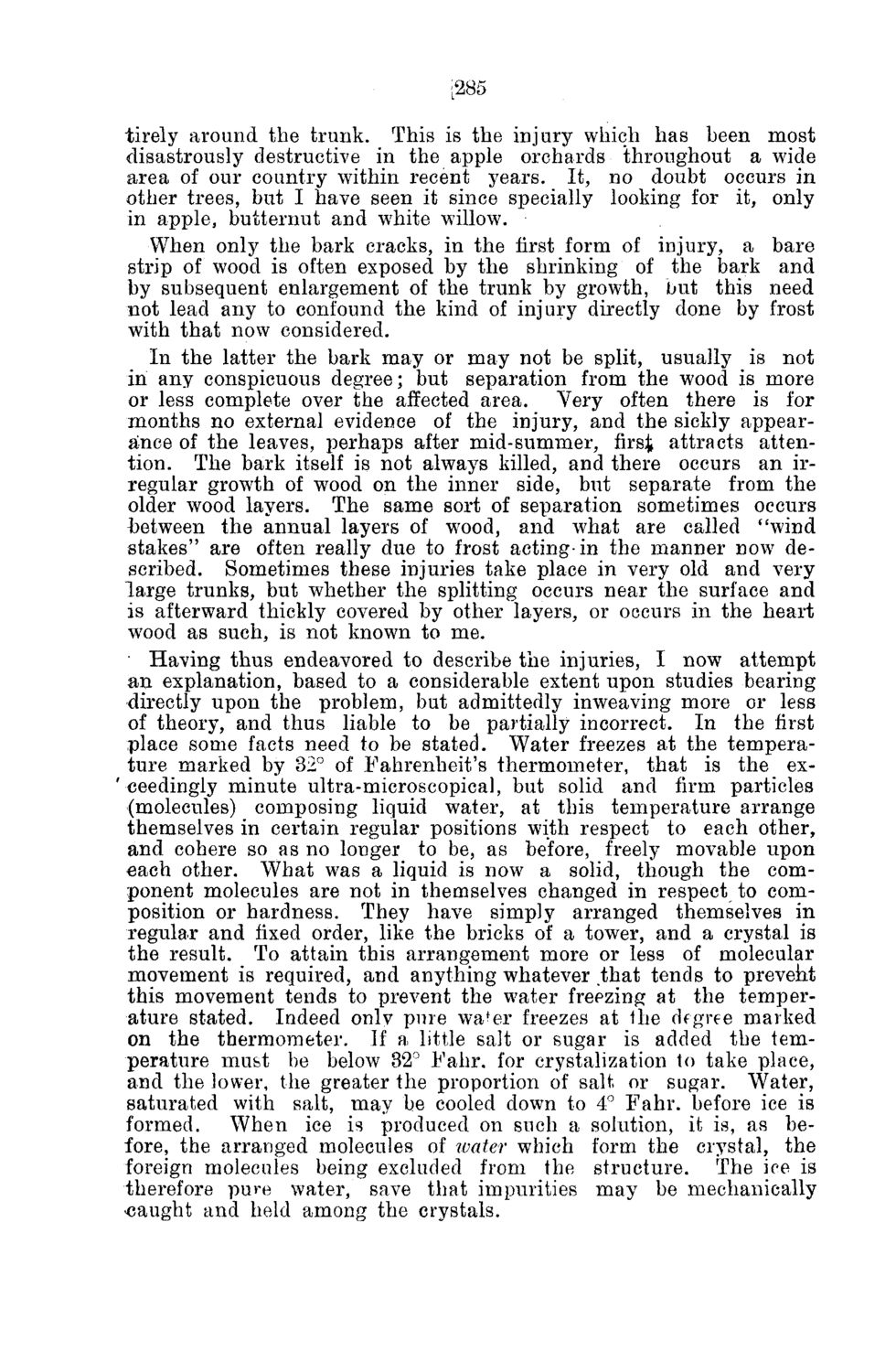| |
| |
Caption: Board of Trustees Minutes - 1886
This is a reduced-resolution page image for fast online browsing.

EXTRACTED TEXT FROM PAGE:
[285 tirely around the trunk. This is the injury which has been most disastrously destructive in the apple orchards throughout a wide area of our country within recent years. It, no doubt occurs in other trees, but I have seen it since specially looking for it, only in apple, butternut and white willow. When only the bark cracks, in the first form of injury, a bare strip of wood is often exposed by the shrinking of the bark and by subsequent enlargement of the trunk by growth, but this need not lead any to confound the kind of injury directly done by frost with that now considered. In the latter the bark may or may not be split, usually is not in any conspicuous degree; but separation from the wood is more or less complete over the affected area. Very often there is for months no external evidence of the injury, and the sickly appearance of the leaves, perhaps after mid-summer, first attracts attention. The bark itself is not always killed, and there occurs an irregular growth of wood on the inner side, but separate from the older wood layers. The same sort of separation sometimes occurs between the annual layers of wrood, and what are called "wind stakes" are often really due to frost acting-in the manner now described. Sometimes these injuries take place in very old and very large trunks, but whether the splitting occurs near the surface and is afterward thickly covered by other layers, or occurs in the heart wood as such, is not known to me. Having thus endeavored to describe the injuries, I now attempt an explanation, based to a considerable extent upon studies bearing •directly upon the problem, but admittedly inweaving more or less of theory, and thus liable to be partially incorrect. In the first place some facts need to be stated. Water freezes at the temperature marked by 32° of Fahrenheit's thermometer, that is the exceedingly minute ultra-microscopical, but solid and firm particles (molecules) composing liquid water, at this temperature arrange themselves in certain regular positions with respect to each other, and cohere so as no longer to be, as before, freely movable upon each other. What was a liquid is now a solid, though the component molecules are not in themselves changed in respect to composition or hardness. They have simply arranged themselves in regular and fixed order, like the bricks of a tower, and a crystal is the result. To attain this arrangement more or less of molecular movement is required, and anything whatever that tends to prevent this movement tends to prevent the water freezing at the temperature stated. Indeed onlv pure wa f er freezes at the dfgree marked on the thermometer. If a little salt or sugar is added the temperature must be below 32° Fahr. for crystalization to take place, and the lower, the greater the proportion of salt or sugar. Water, saturated with salt, may be cooled down to 4° Fahr. before ice is formed. When ice is produced on such a solution, ifc is, as before, the arranged molecules of ivater which form the crystal, the foreign molecules being excluded from the structure. The ice is therefore pure water, save that impurities may be mechanically •caught and held among the crystals.
| |